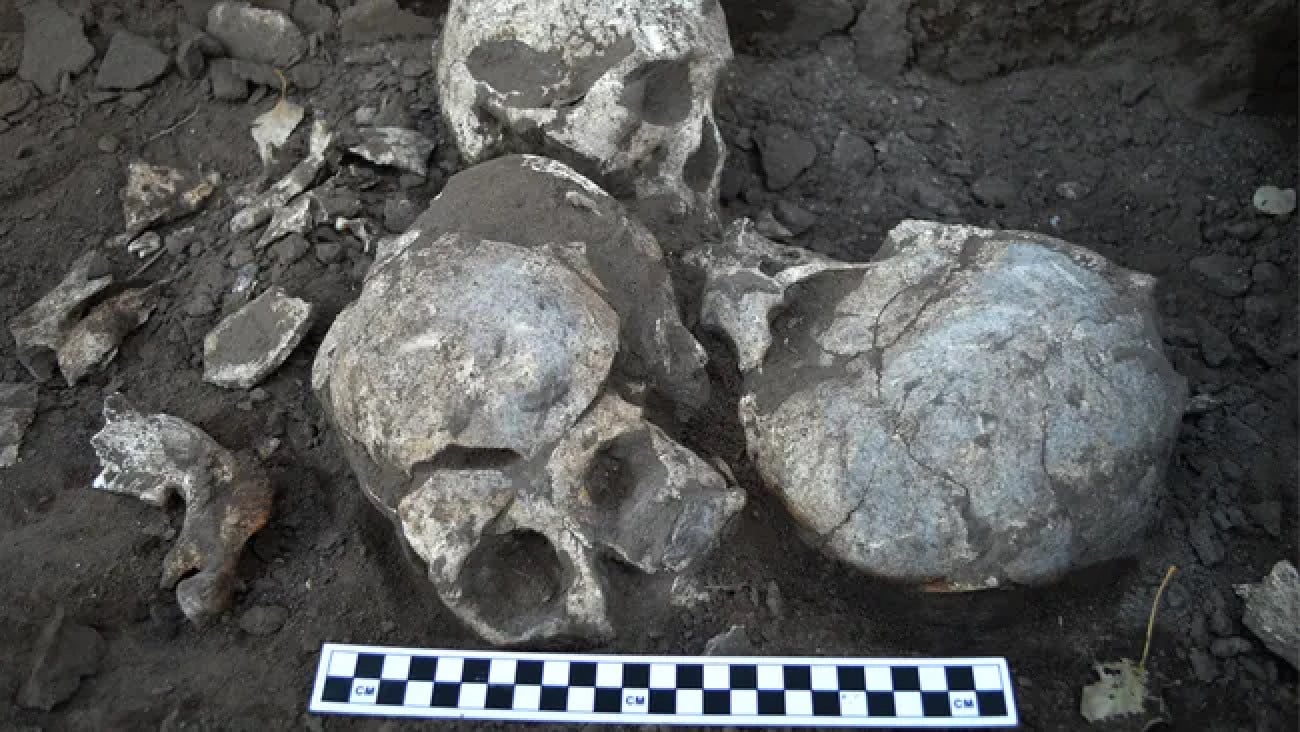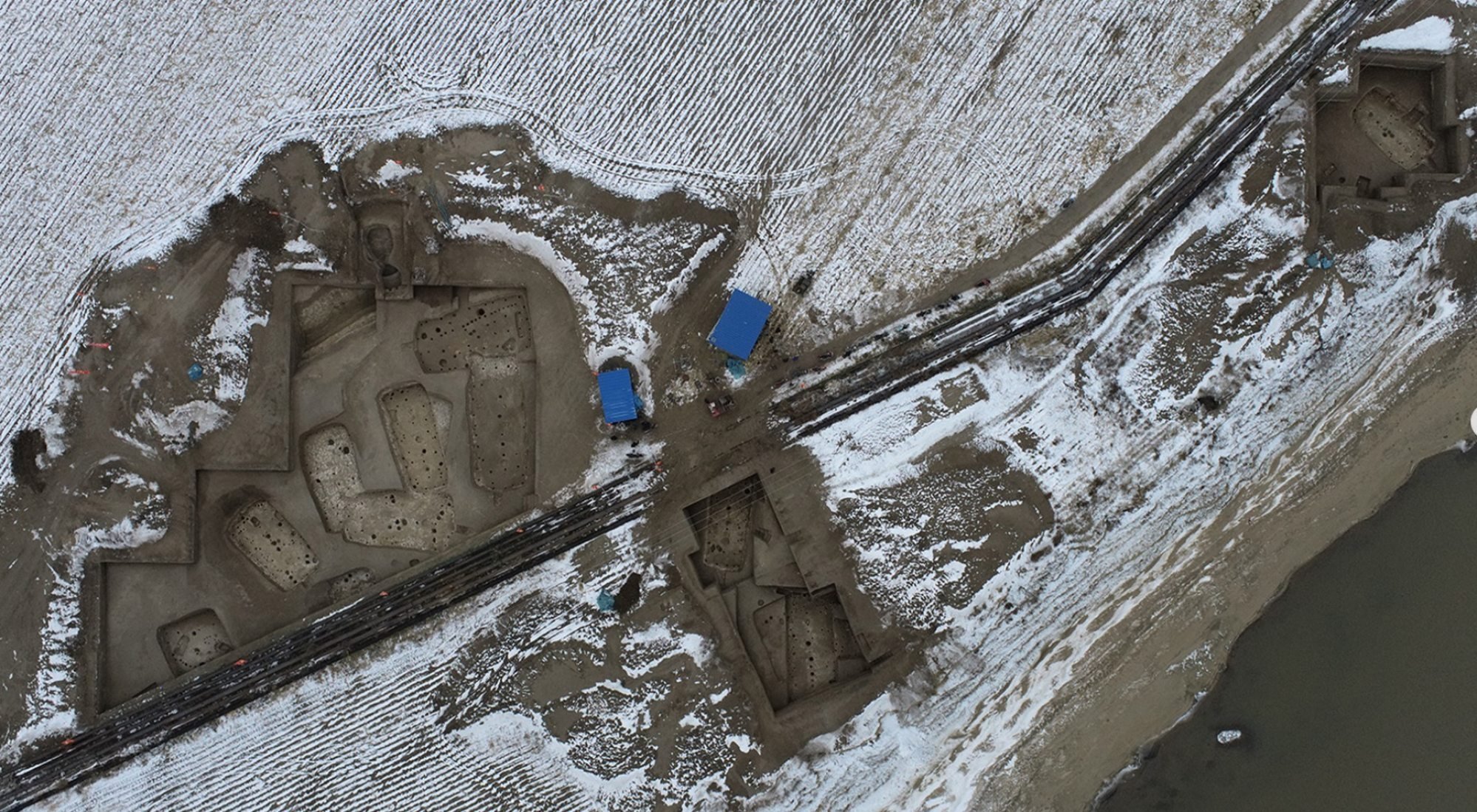
A 4,100-year-old mass grave discovered in northeast China has shed light on the largest known headhunting massacre of the country’s Neolithic period, according to a study into the remains published in September.
In a dark twist, scientists discovered that all of the victims in the village of Honghe in Heilongjiang province were women and children, which they said indicated the “cruelty of ancient warfare”.
“In historic and prehistoric times, headhunting was a violent act and often an organised and coherent form of interpersonal conflict or violence during warfare and conflict,” Qian Wang, an author of the study and professor at Texas A&M University in the US told the Post.
“Heads of enemy tribes or groups were sought after for a specific ritual meaning, that is, to conquer and/or possess the soul and energy of the enemies,” he said.
Archaeologists first discovered the site in the 1990s and it has been excavated six times since then.

Four skulls, which experts say are probably male, were found buried together in a pit. They were likely kept as “trophies”. Photo: Qian Wang/Texas A&M University School of Dentistry
The digs unearthed 43 individuals who fell victim to multiple headhunting events, including 32 individuals who were probably killed in a single massacre, which would be the largest known headhunting event in Neolithic China.
Scientists are confident that the victims were decapitated because, apart from missing heads – the cervical vertebrae bones contained cut marks consistent with rough hacking using a sharp object.
They believe the headhunting was carried out using bond-handled weapons with sharpened stones attached to the top and that the head was cut off from the front.
While it is impossible to know the exact details of the battle, scientists have recreated what they believe is the most likely unfolding of events based on the fact that the massacre targeted women and children.
The Honghe were probably a fishing, hunting and farming people. They were also perhaps hostile to certain neighbouring tribes, often fighting over resources.
It is probable that the Honghe people attacked other villages and beheaded their inhabitants.
They were likely navigating deep interpersonal conflicts between the neighbouring tribes, and one day, a group of attackers decided to wait for the men to leave Honghe and attack the village when it was only populated with women and children.
They killed most, if not all, of the people left behind. Then, the heads would have been removed and taken as trophies.
“When the survivors gathered back, and male tribe members returned, they moved the corpses to two houses for a simple burial and then abandoned the settlement,” said Wang.
Archaeologists also found four skulls in a separate pit that did not have an accompanying body, and Wang said it is possible they were trophies from previous battles that the attackers had taken with them to Honghe.
While no major Neolithic headless burials had been found in China until the recent mass graves, there were two similar sites discovered in the Lake Baikal area in eastern Siberia.

An aerial view of the site shows three residential areas and tombs that were encircled by three defensive trenches. Photo: Qian Wang/Texas A&M University School of Dentistry
Those tribes had a culture similar to the hunting and fishing one of the Honghe.
Decapitation has played an important role throughout Chinese history.
During the Shang dynasty (1600-1046 BC), an increase in decapitations resulted in the human head transforming into a valued object, creating a belief that a headless soul was less likely to seek retaliation in the afterlife, according to a study published in Cambridge University Press.
The beheading was a component of death in ancient China’s tradition of Five Punishments, or the consequences for people who violated community laws.
News Related-
‘Bring it to me’: woman in China barks at ride-hail driver to travel 50km to return phone she left in car for free, triggers online backlash
-
Climate change: water scarcity is fuelling new crises across Asia
-
Going nuclear: how Asia is leading the zero-emission power push
-
‘Light in his eyes’: excited China boy, 7, makes meagre exam progress, rewarded with chicken dinner by mother who is praised for parenting style
-
Melissa Barrera, Susan Sarandon face backlash for comments about Middle East Crisis
-
We review 5 of the biggest pieces of gaming tech on sale this Black Friday
-
'Maestro' chronicles the brilliant Bernstein — and his disorderly conduct
-
US$42,000 China romance scammers snared after flying below radar by swindling small amounts out of many men, hoping they would write off loss
-
'Scott Pilgrim Takes Off'—and levels up
-
‘Fines are king’: county in China imposes ‘uncivilised behaviour’ penalty for squatting while eating and not making beds
-
Making the Most Out of Friendsgiving
-
'Leo' is an animated lizard with an SNL sensibility — and the voice of Adam Sandler
-
Native American playwright Larissa FastHorse takes on the 'wild mess' of Thanksgiving
-
A woman reported her son missing in 1995, but it took years to learn his fate
